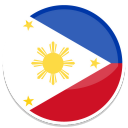
 Get Unlimited Philippines VPN from FlowVPN
Get Unlimited Philippines VPN from FlowVPN
What is the best VPN for Philippines?
Get Unlimited VPN for Philippines from $ 1.99
VPN Services are available to access from Philippines, and FlowVPN has infrastructure in this region giving you fast, unlimited access to the Internet. Our VPN local servers are in a data centre close to Manila.
Sign up to get Philippines VPN with FlowVPN now
As well as servers near Manila (Philippines), FlowVPN has 100s of servers located in 60+ countries giving you the freedom of fast, unlimited VPN.
Get VPN IPs in Philippines
FlowVPN has multiple servers in Philippines giving you access to local IPs. Get unlimited VPN access to Philippines through FlowVPN’s global network.
Get a huge discount! Unlimited VPN for $1.99!
Sign-up to FlowVPN with VPN Promotion / Coupon Code COUNTRY-PHILIPPINES-VPN-PROMOTION for just $1.99 for your first month – almost half the normal price!
Philippines VPN Services
Flow VPN provides VPN services from our host near Manila, Philippines. The servers near Manila is part of our high speed global network spanning 100+ locations in more than 60 countries. We provide unlimited Philippines VPN services with a free trial, protecting your data allowing you to access the Internet privately and securely. We do not artificially cap your bandwidth.
We have multiple servers in Philippines providing a fast and reliable connection.
Our VPN Servers close to Manila (Philippines) support standard VPN protocols including WireGuard, PPTP, L2TP, IPSec, IKEv2, OpenVPN and SSH VPN. We have clients available for iPhone, macOS, Windows and Android – download the FlowVPN app from your App Store or sign-up now.
How fast are Internet connections in Philippines?
The speed of Internet connections in the Philippines varies widely depending on the location, provider, and type of connection. Here are some key points:
- Average Speed: As of recent reports, the average fixed broadband speed in the Philippines is around 50-70 Mbps.
- Mobile Data: Mobile internet speeds typically range from 20-30 Mbps.
- Urban vs. Rural: Internet speeds can be significantly faster in urban areas compared to rural regions, where infrastructure may be less developed.
- Leading Providers: Major ISPs like PLDT, Globe, and Converge ICT offer higher-speed plans, sometimes exceeding 100 Mbps in certain areas.
- 5G Development: With the rollout of 5G technology, certain areas, particularly in major cities, can experience speeds over 100-300 Mbps.
While the overall internet speed in the Philippines has been improving, it still lags behind many developed countries. Continuous infrastructure development is needed to enhance connectivity across the nation.
Is the Internet censored in Philippines?
As of my knowledge cutoff in October 2023, Internet censorship in the Philippines is relatively limited compared to some other countries. However, there are some instances of government action and concerns regarding freedom of speech and information.
- Laws and Regulations: The Cybercrime Prevention Act of 2012 includes provisions that allow the government to block websites involved in cybercrime activities. While the law was initially criticized for its potential to be used for censorship, subsequent rulings have mitigated some of these concerns.
- Social Media Monitoring: There have been instances where the government has monitored social media platforms for what it deems as fake news or content that could incite violence or harm public order.
- Content Restrictions: Disinformation and fake news have prompted discussions about regulating online content, including potential legislation on social media and other online platforms.
- Freedom of Expression: Human rights organizations have raised concerns about freedom of expression online, especially in relation to dissent against the government and public officials.
While there are mechanisms in place that could potentially be used for censorship, the overall environment for internet freedom in the Philippines remains largely open. It is always important to stay updated with the latest developments as the legal and regulatory landscape can change.
Is pornography restricted in Philippines?
Yes, pornography is restricted in the Philippines. Distribution, production, and possession of pornographic materials are illegal under Philippine law. These activities are primarily governed by:
- Republic Act No. 7610 – Known as the “Special Protection of Children Against Abuse, Exploitation and Discrimination Act.”
- Republic Act No. 9775 – Known as the “Anti-Child Pornography Act of 2009.”
- Article 201 of the Revised Penal Code – Penalizes immoral doctrines, obscene publications, and exhibitions and indecent shows.
Enforcement of these laws is carried out by various government agencies, including:
- The Philippine National Police (PNP)
- The National Bureau of Investigation (NBI)
- The Department of Justice (DOJ)
Anyone found violating these laws can face severe penalties, including imprisonment and fines.
What is the current internet penetration rate in the Philippines?
According to the latest data as of 2023, the internet penetration rate in the Philippines is approximately 68%.
Here is the information formatted with HTML tags:
According to the latest data as of 2023, the internet penetration rate in the Philippines is approximately 68%.
How concerned are people in Philippines about data privacy?
People in the Philippines are becoming increasingly concerned about data privacy. This growing awareness is driven by several factors:
- High-profile Data Breaches: Incidents involving major corporations and government agencies have highlighted vulnerabilities.
- Increased Digital Dependency: The shift towards digital services for banking, shopping, and communication has made data privacy more pertinent.
- Legislative Developments: The implementation of the Data Privacy Act of 2012 (Republic Act No. 10173) and its subsequent enforcement have raised public awareness.
- Media Coverage: Continuous media reporting on privacy issues and cyber threats keeps the topic in public discourse.
While there is growing concern, there is also a varying degree of awareness and understanding about how to protect personal data among the general populace.
What are the cybersecurity challenges faced by internet users in Philippines?
Internet users in the Philippines face several cybersecurity challenges, including:
- Phishing Attacks: Many users fall victim to phishing schemes where attackers try to steal sensitive information by posing as trustworthy entities.
- Malware Infections: The spread of malicious software that can harm devices, steal data, or display unwanted ads remains a significant issue.
- Weak Passwords: Many users still rely on weak or easily guessable passwords, making it easier for attackers to gain unauthorized access to accounts.
- Unsecured Wi-Fi Networks: Public Wi-Fi networks are often unsecured, allowing attackers to intercept data and gain access to personal information.
- Social Engineering: Attackers manipulate users into divulging confidential information through psychological manipulation.
- Ransomware: Cybercriminals encrypt user data and demand payment for its release, causing significant disruptions and financial losses.
- Data Privacy Concerns: There are ongoing worries about how personal data is collected, used, and shared by companies and third parties.
- Insider Threats: Employees or associates with access to sensitive information can pose a risk, whether intentionally or accidentally.
- Outdated Software: Many users do not regularly update their software, leaving systems vulnerable to known exploits.
- Lack of Awareness: General lack of cybersecurity awareness and education among users increases the risk of falling victim to cyber threats.
What are the most visited websites in Philippines?
- Google – For search engine purposes
- YouTube – For video streaming and content
- Facebook – For social networking
- Lazada – For online shopping
- Netflix – For video streaming services
- Yahoo – For news and email services
- Twitter – For social networking and news updates
- Shopee – For online shopping
- Instagram – For photo and video sharing
- TikTok – For short video content
What are the most popular social media platforms in the Philippines?
As of the most recent data, the following are the most popular social media platforms in the Philippines:
- Facebook – Known for its wide range of features including posts, stories, and groups. It remains the most used platform.
- YouTube – Popular for video content, from entertainment to educational materials.
- Instagram – Favored for its photo and short video sharing capabilities.
- Twitter – Used for real-time updates and trending topics.
- TikTok – Growing rapidly due to its short-form, creative video format.
- Messenger – A widely used messaging app, often integrated with Facebook.
- Kumu – A live streaming app that has gained considerable traction in recent years.
These platforms are largely preferred for their varying functionalities and alignment with user preferences in the Philippines.
Our servers are constantly monitored to ensure there are no issues. We use internal monitoring tools as well as multiple third party providers to ensure all services are regularly checked and benchmarked so we can identify any potential issues.
Philippines Facts
Philippines Top Level Domain: .ph
Currency: Peso
